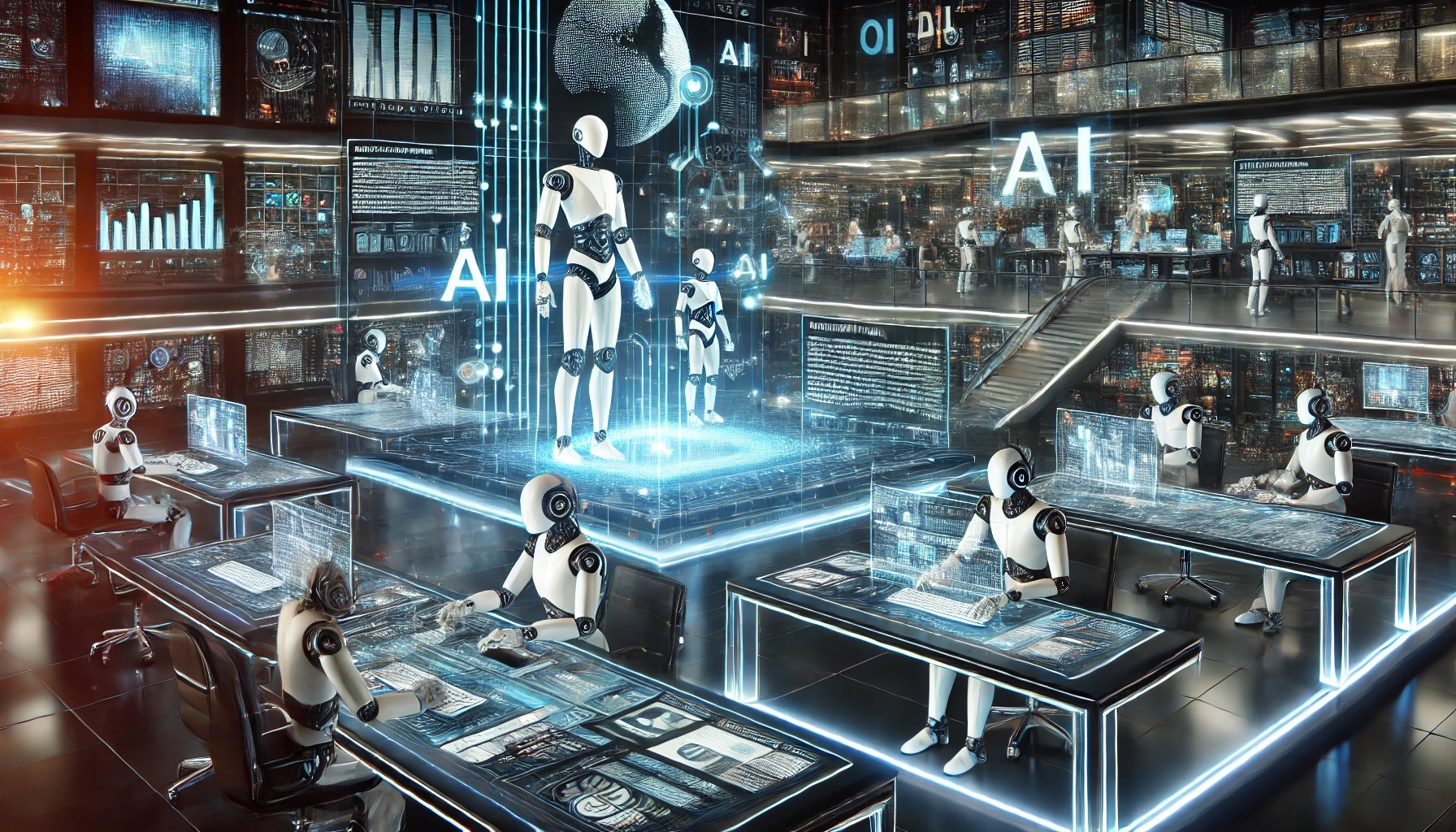A quick overview of the GPT-4 linguistic model of Openai in just 10 points. Find out how it works, its characteristics and its potential impact on the future of the text generated by artificial intelligence.
Summary
Artificial intelligence (IA) has made a long way since its birth and its evolution has been remarkable. The IA has revolutionized our way of working, communicating and living. THE'Ia has the potential to transform each sectorAnd, with the advent of the GPT-4, it is ready to make a huge leap forward in the field of the elaboration of natural language (NLP).
1. What is artificial intelligence
IA is a field of computer science that aims to create intelligent machines capable of carrying out tasks that usually require human intelligence. The evolution of the AI can be divided into three phases: the first phase consists of rules -based systems, the second by statistical learning and the third by deep learning.
In the first phase, the IA systems were based on a series of rules scheduled in the system. These rules were used to make decisions and perform tasks. The second phase of the I involved the use of statistical learning, in which the machines were trained on large sets of data to identify models and make predictions. The third phase of the AI, deep learning, involves the use of neural networks, which are modeled on the human brain.
2. What is and how is GPT-4 work?
GPT-4 is the fourth iteration of the Pre-Trained Transformer generative linguistic model (GPT) developed by Openai. It is a Deep Learning model that uses non -supervised learning to generate texts similar to human ones. GPT-4 is designed to understand the context of a given text and generate coherent and relevant answers.
GPT-4 is based on an architecture with transformers, a type of neural network optimized for the processing of data sequences. It is pre-investigated on a large corpus of textual data and can generate texts in different languages. GPT-4 can be optimized for specific tasks such as linguistic translation, the answer to questions and the summary.
3. The evolution of GPT models
The GPT models were introduced by Openai in 2018, with the release of the GPT-1 model. The model was trained on a large corpus of textual data and was able to generate texts similar to human ones. GPT-2 was released in 2019 and was able to generate more coherent and diversified texts than its predecessor. However, due to the worries about the potential improper use of the model, Openii did not make the complete model public.
In 2020, Openai released GPT-3, which represented a significant improvement compared to previous versions. GPT-3 is able to generate a text similar to the human one, difficult to distinguish from that written by man. It is able to perform a series of tasks such as linguistic translation, summary and answer to questions.
5. The GPT-4 news compared to GPT-3
One ofsignificant differences between GPT-4 and GPT-3It is the increase in the number of parameters. GPT-3 had 175 billion parameters, which made it one of the models ofartificial intelligencelarger and more powerful. However, the GPT-4 is expected to have an even greater number of parameters, potentially exceeding the threshold of 1,000 billion. With a greater number of parameters, GPT-4 will have a deeper understanding of language and will be able to generate more consistent and simultaneously relevant texts.
Another interesting novelty of the GPT-4 is its ability to understand and generate multimodal content. While GPT-3 was able to generate text, GPT-4 should generate not only text but also images, videos and audio. This feature will allow GPT-4 to create more engaging and interactive content, making it suitable for applications in various sectors, such as games, advertising and entertainment.
The GPT-4 should also improve the skills of understanding the natural language of the GPT-3. GPT-3 was already impressive for its ability to understand the context and generate coherent texts. However, GPT-4 should go even further, potentially incorporating graphs of knowledge and other forms of external knowledge to improve understanding of language.
Finally, GPT-4 should be more efficient in the use of computational resources. The GPT-3 required incredibly powerful hardware for training and execution, limiting its accessibility for smaller organizations or individuals. However, the GPT-4 should be more efficient, making it more accessible and convenient for a wider range of users.
Overall, GPT-4 is expected to represent a significant leap forward in the linguistic models of artificial intelligence, bringing new progress in the generation of multimodal content, in the understanding of natural language and efficiency. Pending the official announcement and release, researchers and developers are already preventing the potential applications and the impact of this revolutionary artificial intelligence model.
6. Potential impact of the GPT-4 on various industrial sectors
The GPT-4 has the potential to revolutionize different sectors, including healthcare, education and finance. In the health sector, the GPT-4 can be used to analyze medical reports and suggest treatment plans. In the education sector, it can be used to create personalized learning plans for students. In the financial field, it can be used to analyze financial data and make predictions on market trends.
The GPT-4 can also be used to improve customer service in various sectors. It can be used to generate answers to customers' questions and complaints, improving customer response times and satisfaction. In the financial field, it can be used to analyze financial data and make predictions on market trends.
The GPT-4 can be used to improve customer service in various sectors. It can be used to generate answers to customers' questions and complaints, improving customer response times and satisfaction. The GPT-4 can also be used in chatbots and virtual assistants to provide interactions more similar to human ones.
7
If on the one hand the GPT-4 has the potential to revolutionize different sectors, on the other it also places significant challenges and ethical concerns. One of the main concerns is the potential improper use of the model. The GPT-4 can be used to create fake news, impersonate individuals and spread disinformation.
Another concern is the potential distortion of the model. The GPT-4 is pre-investigated on a large corpus of textual data, which can contain prejudices and stereotypes. This can lead to distorted and discriminatory answers generated by the model.
8. Future of the AI and the elaboration of language
The GPT-4 represents a milestone in the field of the AI and language processing. It is expected that it will have a deep impact on different sectors and will revolutionize the way we communicate and work. The GPT-4 will probably open the way for more advanced linguistic models, capable of understanding and generating texts in a variety of languages and contexts.
The GPT-4 also raises important ethical issues on the use of the AI and the need for regulation and supervision. With the continuous evolution of the AI, it is essential to ensure that it is used ethically and responsible.
9. Comparison with other models of language processing
The GPT-4 is not the only linguistic model available. There are numerous other models that use different approaches to language elaboration, such as Bert, Xlnet and T5. Each model has its own strengths and weaknesses and the choice of the model depends on the specific task and the context.
The GPT-4 should be more advanced than its predecessors and other linguistic models. However, it is important to evaluate each model based on its performance and accuracy for specific tasks.
10. What can we expect from the GPT-4 and the future of the AI?
The GPT-4 represents a significant milestone in the field of AI and language processing. It is expected that it will have a deep impact on different sectors and will revolutionize the way we communicate and work. The GPT-4 should be more advanced than its predecessors and other linguistic models, with a better understanding of the higher context and rates.
However, the GPT-4 also places significant challenges and ethical concerns. It is essential to ensure that the IA is used ethically and responsible and that there are supervision and regulation to avoid improper use. With the continuous evolution of the AI, we can expect more advanced linguistic models and intelligent machines capable of carrying out tasks that were previously considered impossible. However, it is important to ensure that the IA is developed and used in order to bring benefits to the company as a whole.
Since the IA continues to transform our world, it is important to remain informed on the latest developments and their implications. Follow Openai and other important research organizations to stay updated on the latest developments of the AI and the processing of language.











